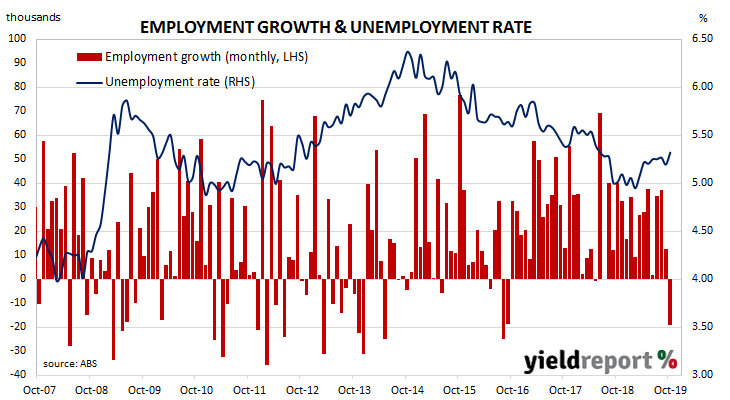Australia’s period of a falling unemployment rate may have come to an end but then again, it may be just another hiccup. After falling below 5% in late 2018, Australia’s jobless rate remained around that mark though early 2019 until it moved higher in the June quarter. Recent leading indicators have been generally pointing towards further softness and the RBA has cut rates three times this year, something the central bank does when it expects unemployment to rise.
The latest Labour force figures have now been released and they indicate the number of people employed in Australia fell while a proportion of the population ceased working or looking for work. The report shows the total number of people employed in Australia decreased by 19,000 in October while the unemployment rate slipped from 5.2% to 5.3%.

Morgan Stanley Australia Equity Strategist Chris Read said, “Given the RBA’s more patient tone over the past few weeks we don’t think that this release is enough to see a December rate cut, but the continued data weakness we expect over the next couple of months should firm up the need for a February rate cut, leaving the cash rate at 0.5%.”
Market expectations prior to the report’s release were for 16,000 new positions to be created and for the unemployment rate to remain at 5.2%. However, investors and traders reacted to a lower underemployment rate by sending yields lower while raising expectations of rate cuts. By the end of the day, 90-day bank bills had shed 2bps to 0.90%, the yield on 3-year ACGBs had lost 8bps to 0.53%, the 10-year had dropped by 10bps to 1.18% and the 20-year yield finished 8bps lower at 1.61%.

